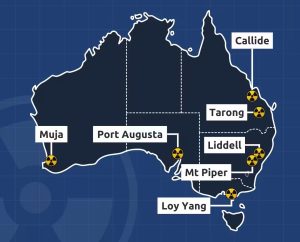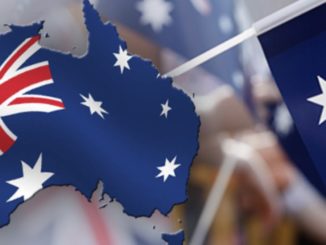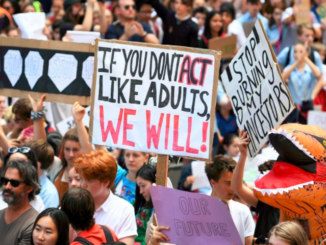
As Australia stands at a crossroads in its energy future, the debate over nuclear power has become one of the nation’s most divisive and consequential public issues. With the federal opposition proposing to build seven nuclear power plants as part of a post-coal transition, Australians are being asked to consider not just the technical feasibility of nuclear energy, but its broader social, economic, and environmental impacts. This commentary examines the real-world data, public opinion, and lived experiences that frame the nuclear debate in 2025—and asks whether nuclear power is worth the gamble for Australian society.
The Economic Reality: Nuclear’s Price Tag
The most compelling argument against nuclear power in Australia is its staggering cost. The Coalition claims its nuclear plan would cost $116 billion and deliver lower system costs than Labor’s renewables-focused approach. However, independent analysis paints a different picture. CSIRO finds that nuclear-generated electricity would cost between $145 and $238 per megawatt-hour (MWh) by 2040, at least twice the cost of solar ($22–$53/MWh) and wind ($45–$78/MWh).
The Institute for Energy Economics and Financial Analysis (IEEFA) estimates that introducing nuclear into Australia’s grid would increase the average household electricity bill by $665 per year, and for larger families, the rise could approach $972 annually. This is because nuclear projects overseas—such as Olkiluoto 3 in Finland and Hinkley Point C in the UK—have experienced massive cost blowouts and delays, with levelised costs of electricity (LCOE) between $250 and $346 per MWh. If similar outcomes occur here, Australians could be saddled with some of the highest power prices in the developed world.
The Climate Council’s analysis is even more sobering: building 11 GW of nuclear capacity could cost between $116 billion and $600 billion yet only provide about 15% of the National Electricity Market’s (NEM) needs by 2050. In contrast, the current renewable transition plan can meet 100% of Australia’s electricity needs for $383 billion, mostly funded by private capital, not taxpayers. If nuclear is funded through taxes, each of Australia’s 13.6 million taxpayers could be liable for at least $8,562—and up to $44,118—depending on the scale of cost overruns.
“As long as my electricity bill doesn’t go up, I’m Ok with it.”
-Said Amy, a concerning public member. the major concern the public is facing is with electricity bills given the cost of living in Sydney is already quite high.
Environment and Social Impact
With the Australia government aiming to achieve Net-zero by 2050, Nuclear power is often seen as a viable and more stable solution. But base on the estimated timeline, it would take at least 15 years for nuclear plants to deliver their first electricity. the Climate Change Authority warns that a nuclear pathway would actually increase Australia’s emissions by at least 1 billion tonnes by 2050 compared to a renewables-led scenario. This is because nuclear’s slow rollout would necessitate keeping coal plants running longer, delaying emissions cuts and jeopardizing Australia’s legislated 43% reduction target for 2030.
Socially, the nuclear proposal is deeply divisive. Community polling in regions proposed for nuclear development reveals skepticism about the financial benefits. In Gladstone, Central Queensland, Bunbury, and other regions, support for nuclear projects is as low as 22–32%, and only 13% of locals believe nuclear would bring down their bills the fastest. This data highlights a disconnect between national-level debate and the lived realities of regional communities.

Public Health and Community Concerns
Radioactive waste is another major public worry. Australia currently has no long-term solution for managing high-level nuclear waste, which stays hazardous for thousands of years. Communities near proposed reactor sites are wary of the risks, both for their health and for future generations. Water use is also a concern: nuclear plants require vast amounts of water for cooling, a challenge in Australia’s drought-prone landscape.
Doctors for the Environment Australia and the Australian Nursing & Midwifery Federation point to studies showing increased rates of thyroid cancer and leukemia among people living within 30km of nuclear plants. They emphasize that there is “no safe level of radiation,” and even low-level exposure can have long-term effects.
Past nuclear disasters—Chernobyl and Fukushima—remain vivid in the public memory, highlighting the catastrophic potential of accidents, even with modern safety standards. Nurses and doctors argue that Australia should prioritize the least hazardous energy sources, especially with safer and cheaper alternatives available.
Local opposition is strong in many regions earmarked for nuclear development. Residents express fears about declining property values, the burden of radioactive waste, and the risk of accidents. Community engagement is key, and many feel their concerns are not being adequately heard or addressed.
Alternatives: Renewables Offer Cheaper, Faster, and Safer Solutions
Australians are not just concerned about the risks of nuclear—they are also aware of the opportunities offered by renewables. Solar and wind power, backed by batteries and other storage technologies, are already delivering affordable, reliable energy across the country. Renewables can be deployed quickly—within months or a few years, helping to reduce emissions and lower bills far sooner than nuclear could.
CSIRO and the Climate Council both confirm that renewables are the lowest-cost way to meet Australia’s electricity needs, and they do not carry the same health, waste, or water risks as nuclear power. Public health experts argue that renewables also avoid the health fallout associated with both nuclear and fossil fuels, making them the ethical choice for a sustainable future.
Conclusion: Public Voices Demand Caution on Nuclear
For many Australians, the nuclear debate is not just about technology or ideology—it’s about the safety, health, and economic wellbeing of their families and communities. The evidence shows that nuclear power would be expensive, slow to deliver, and fraught with risks that are deeply felt by the public—from higher bills and health concerns to environmental hazards and community division.
With strong alternatives available, the public’s message is clear: Australia should invest in renewables, not nuclear, to secure a cleaner, safer, and more affordable energy future. As the debate continues, it is the voices of everyday Australians—grounded in real concerns and lived experience—that must guide the nation’s path forward.




Be the first to comment